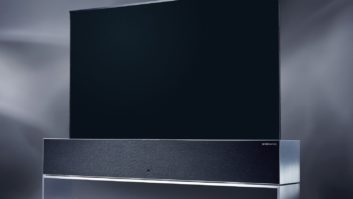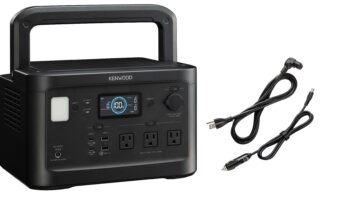Universal City, Calif. — Despite the emergence of downloadable videos and HD video on demand, sales of next-generation high-definition disc players and software continue to track with the launch of standard-definition DVDs, at this point in their roll out, and will continue to grow into a successful business, supporters of the HD DVD and Blu-ray Disc formats said at the HDTV DisplaySearch conference here Wednesday.
Russ Crupnick, senior industry analyst and VP of DisplaySearch parent company The NPD Group, said next-generation set-top player sales will reach 1 million units in 2007.
On a revenue basis, next-generation players accounted for 27 percent share of the overall market in August, and an 11 percent share between April 2006 and August 2007.
Software is selling a relatively small amount compared to the overall packaged movie market with $150 million in cumulative Blu-ray and HD DVD revenue and 4.5 million unit sales to date.
However, high-definition stand-alone player sales have shown a recent spike, and now comprise a 5 percent unit share of the total DVD player market, up from just 1.3 percent between April 2006 and August 2007, according to NPD.
“Leaving aside the VOD revolution, about 40 percent of all packaged DVD will be in next-generation discs, selling 400 million units for a 40 percent share over the next four to five years,” Crupnick said.
He added that the overwhelming percentage of HDTV enthusiasts are men, and that those who have purchased high-definition disc players are highly enthusiastic about the technology, and will prove to be key in taking the format launch further into the mainstream.
The key to continuing the success of the rollout will be in educating new HDTV buyers that high-definition disc players offer a better picture and surround sound experience than standard-definition DVD.
Crupnick added that significant confusion remains among mainstream consumers about the existence of high-definition disc players. Just 11 percent of surveyed consumers said they were likely to buy a next-generation DVD player in the next six months, while 23 percent were “somewhat likely.”
The industry has to overcome the problem that it is competing against “a wonderful product” in standard-definition DVD, which some HDTV owners believe are already high-definition devices. Consumers also remain price resistant, and the HD gamer audience “has not materialized yet,” Crupnick said.
The study also found some resistance to purchasing a player until a format winner is determined, but to a lesser extent than price. In fact, DisplaySearch said the format war is helping build awareness to the existence of next-generation player category.
“The chances are pretty slim” that high-definition won’t succeed, said Don Eklund, Sony Pictures Home Entertainment advanced technologies executive VP. “There are obstacles in getting consumers to appreciate it, but it’s inevitable it will roll. Satellite and cable do a good job of indoctrinating people to high-def and by extension high-def packaged media.”
Representatives of the two formats said that while high-definition is a significant reason for purchasing a next-generation player, debate ensued over whether or not having interactive extras with Web connectivity is the killer-app for purchasers.
Alan Bell, Paramount Pictures chief technology officer and executive VP, said the Web connectivity in HD DVD players is key to attracting younger purchasers who are very familiar with Web sites that enable social networking.
“Each of the formats creates great picture and sound, but we need something more to sell next-generation,” he said. “For younger folks, their choice of entertainment is to interact with others. Also, [Web connectivity] is an exciting transition between playing DVD and five to 10 years from now when things are digital.”
Kevin Collins, Microsoft director of HD DVD evangelism, said Web interactivity is a difference-maker in helping consumers select a next-generation player.
“One of the biggest challenges with consumers is understanding what the advantages of HD DVD are to them,” Collins said. “When a consumer goes into a big-box store and is shown this, it is difficult to get an immersive experience in true picture quality.”
But Blu-ray Disc representatives, whose format does not yet support Web interactivity, said that while interactivity is important and a part of the Blu-ray standard, it is high-definition content that matters most.
“I am not trying to say interactivity is not important,” stated Andy Parsons, Pioneer Electronics new product development and technical support senior VP. “The Blu-ray version of ‘300’ out sold the HD DVD version 2-to-1. It’s about the story. If it is out selling HD DVD 2-to-1, I would have to say interactivity is nice but it is not causing anyone to say, ‘I refuse to watch it on Blu-ray.’”
Dan Silverberg, Warner Home Video high-definition marketing VP, credited, in part, PlayStation3 users for selling a quarter million units of ‘300’ on Blu-ray. The gaming console has built-in connectivity, and BD-J interactivity. But most early set-top Blu-ray players will not support Web interactivity.
Silverberg said, “We can use HD discs to train the consumer to move into digital . You get a quicker tutorial on VOD by owning a PS3 player or HD DVD player,” he said.
Panelists indicated that retailers ultimately will help consumers decide which format to support.
“The retailer continues to play an important role in the decision,” said Patrick Fitzgerald, Walt Disney Studios Home Entertainment worldwide sales, distribution and trade marketing executive VP. “It’s a 2-to-one race [Blu-ray to HD in sell-through content. Right now, retailers are a little more bullish about Blu-ray. As we go forward you will see that gap maintained and expanded, and retailers will make their choice.”







